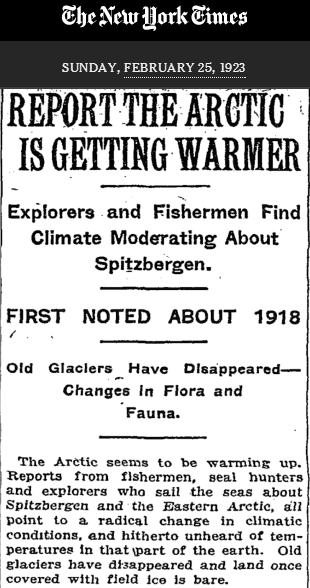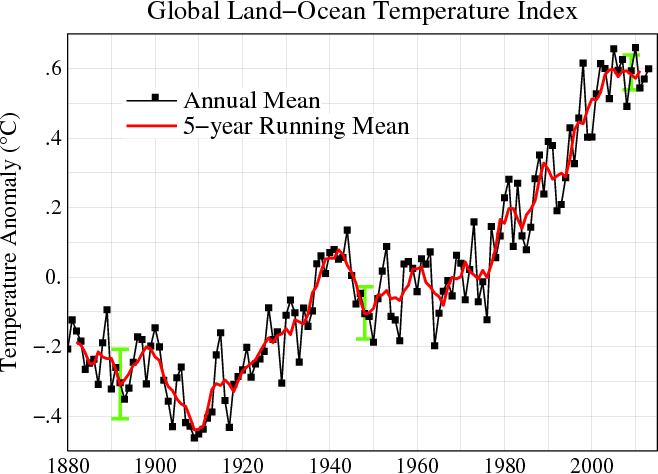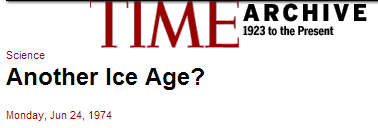According to NASA, temperatures were very cold in 1923, much colder than the 1970’s – when Arctic ice was rapidly expanding.
If you believe the NASA temperature record like Mosher does, then the Arctic was rapidly melting when it was cold, and rapidly freezing when it was warm.
Telltale signs are everywhere —from the unexpected persistence and thickness of pack ice in the waters around Iceland to the southward migration of a warmth-loving creature like the armadillo from the Midwest. Since the 1940s the mean global temperature has dropped about 2.7° F. Although that figure is at best an estimate, it is supported by other convincing data. When Climatologist George J. Kukla of Columbia University‘s Lamont-Doherty Geological Observatory and his wife Helena analyzed satellite weather data for the Northern Hemisphere, they found that the area of the ice and snow cover had suddenly increased by 12% in 1971 and the increase has persisted ever since.
TIME Magazine Archive Article — Another Ice Age? — Jun. 24, 1974





Here is a bit more detail.
The problem is, the graph is upside down! 🙂